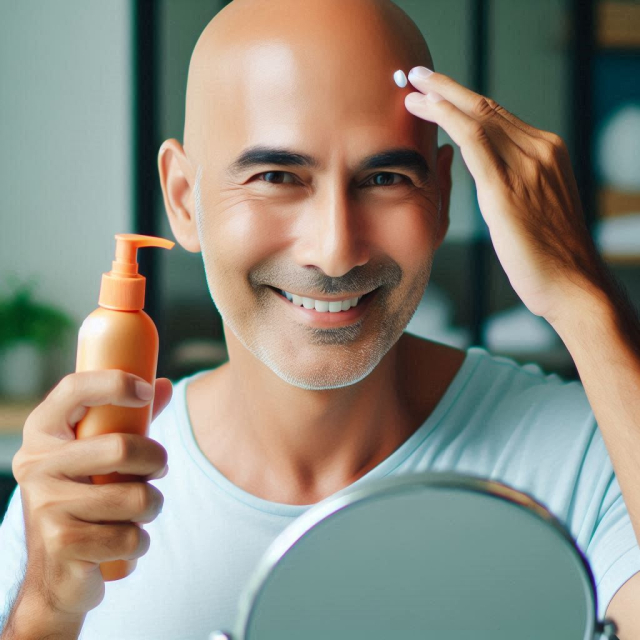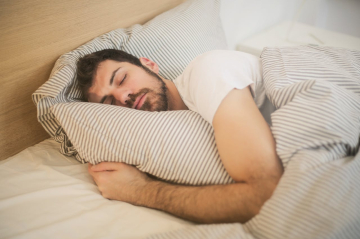Baldness, medically known as alopecia, is a common problem that affects millions of people around the world. Although it is often associated with old age, it can affect people of all ages and genders. In this article, we will explore in depth the causes of baldness, the different types of alopecia, and the treatments available to combat this problem.
Causes of Baldness.
Genetic factors.
The most common cause of baldness is genetics. Androgenetic alopecia, also known as male or female pattern baldness, is hereditary and affects a large proportion of the population. In men, this condition typically manifests with a receding hairline and thinning at the crown. In women, thinning is more diffuse and affects the upper part of the scalp.
Hormonal Factors.
Hormones also play a crucial role in hair loss. Dihydrotestosterone (DHT), a hormone derived from testosterone, is responsible for the miniaturization of hair follicles in androgenetic alopecia. In women, hormonal fluctuations during menopause, pregnancy, and contraceptive use can contribute to hair loss.
Stress and Emotional Factors.
Physical and emotional stress can trigger hair loss. Telogen effluvium is a temporary condition in which a large number of hair follicles enter the resting phase, resulting in diffuse hair loss. This condition can be caused by stressful events such as serious illnesses, surgeries, or emotional trauma.
Nutrition and Lifestyle.
A diet deficient in essential nutrients such as protein, iron, zinc, and vitamins can contribute to hair loss. Eating disorders and extremely restrictive diets can also cause alopecia. Additionally, habits such as smoking and excessive alcohol consumption can negatively affect hair health.
Diseases and Medications.
Certain autoimmune diseases, such as alopecia areata, can cause hair loss. In this condition, the immune system attacks the hair follicles, resulting in patchy bald areas. Other diseases such as lupus and thyroid disorders can also cause alopecia. Additionally, some medications, including those used to treat cancer, arthritis, depression, and heart disease, can cause hair loss as a side effect.
Types of Baldness.
Androgenetic Alopecia.
As mentioned above, androgenetic alopecia is the most common type of baldness and is related to genetic and hormonal factors. It affects both sexes, although its presentation and progression may differ between men and women.
Alopecia Areata.
Alopecia areata is an autoimmune disease that causes hair loss in round or irregular patches. It can affect any hairy area, including the beard and eyebrows. In some cases, it can progress to complete hair loss on the scalp (alopecia totalis) or throughout the body (alopecia universalis).
Telogen effluvium.
Telogen effluvium is a form of diffuse hair loss that occurs when a large number of hair follicles enter the resting phase at the same time. This condition is often temporary and can be caused by factors such as stress, hormonal changes, and nutritional deficiencies.
Cicatricial Alopecia.
Cicatricial alopecia, or cicatricial alopecia, is a less common form of baldness that results in the permanent destruction of hair follicles. This condition can be caused by inflammatory diseases of the scalp, infections, or physical trauma. Hair loss in this condition is irreversible due to scarring of the affected follicles.
Trichotillomania.
Trichotillomania is an impulse control disorder in which a person feels an irresistible urge to pull out their hair, leading to hair loss in specific areas. This disorder is more common in children and adolescents and may be related to stress and anxiety.
Treatments for Baldness.
Medicines.
- Minoxidil: It is an over-the-counter topical medication that is applied to the scalp. It can help slow hair loss and, in some cases, stimulate hair growth. It is effective for androgenetic alopecia and telogen effluvium.
- Finasteride: This is a prescription oral medication that inhibits the conversion of testosterone to DHT. It is effective in treating androgenetic alopecia in men, but is not recommended for women of childbearing age due to its potential side effects.
- Corticosteroids: They are used in the treatment of alopecia areata. They can be given as injections into affected areas, as a topical cream, or as oral medications to reduce inflammation and the autoimmune response.
Laser Therapies.
Low-level laser therapies can stimulate hair follicles and promote hair growth. These treatments are available in specialized clinics and as home-use devices.
Platelet Rich Plasma Therapy (PRP).
PRP involves removing a small amount of blood from the patient, which is centrifuged to concentrate the platelets. The platelet-rich plasma is then injected into the scalp to stimulate hair follicles and promote hair growth.
Hair Transplant.
Hair transplant is a surgical solution for baldness. Healthy hair follicles are taken from one part of the body (usually the back of the scalp) and transplanted to the balding areas. There are different transplant techniques, including follicular unit transplantation (FUT) and follicular unit extraction (FUE).
Natural Therapies and Lifestyle Changes.
- Diet and Supplements: Maintaining a balanced diet rich in essential nutrients can help improve hair health. Supplements such as biotin, zinc, and vitamins A, C, and D may be beneficial.
- Stress Reduction: Practicing stress management techniques such as yoga, meditation, and regular exercise can help reduce stress-induced hair loss.
- Hair Care: Using proper hair care products and avoiding harsh chemical treatments and excessive heat can prevent hair damage and reduce hair loss.
Baldness is a common problem that can have a significant impact on a person's self-esteem and quality of life. However, with a proper understanding of its causes and types, and with proper treatment, it is possible to manage and, in some cases, reverse hair loss. It is important to consult a dermatologist or hair specialist for an accurate diagnosis and personalized treatment plan. Continued research in this field promises new and better solutions to combat baldness in the future.






